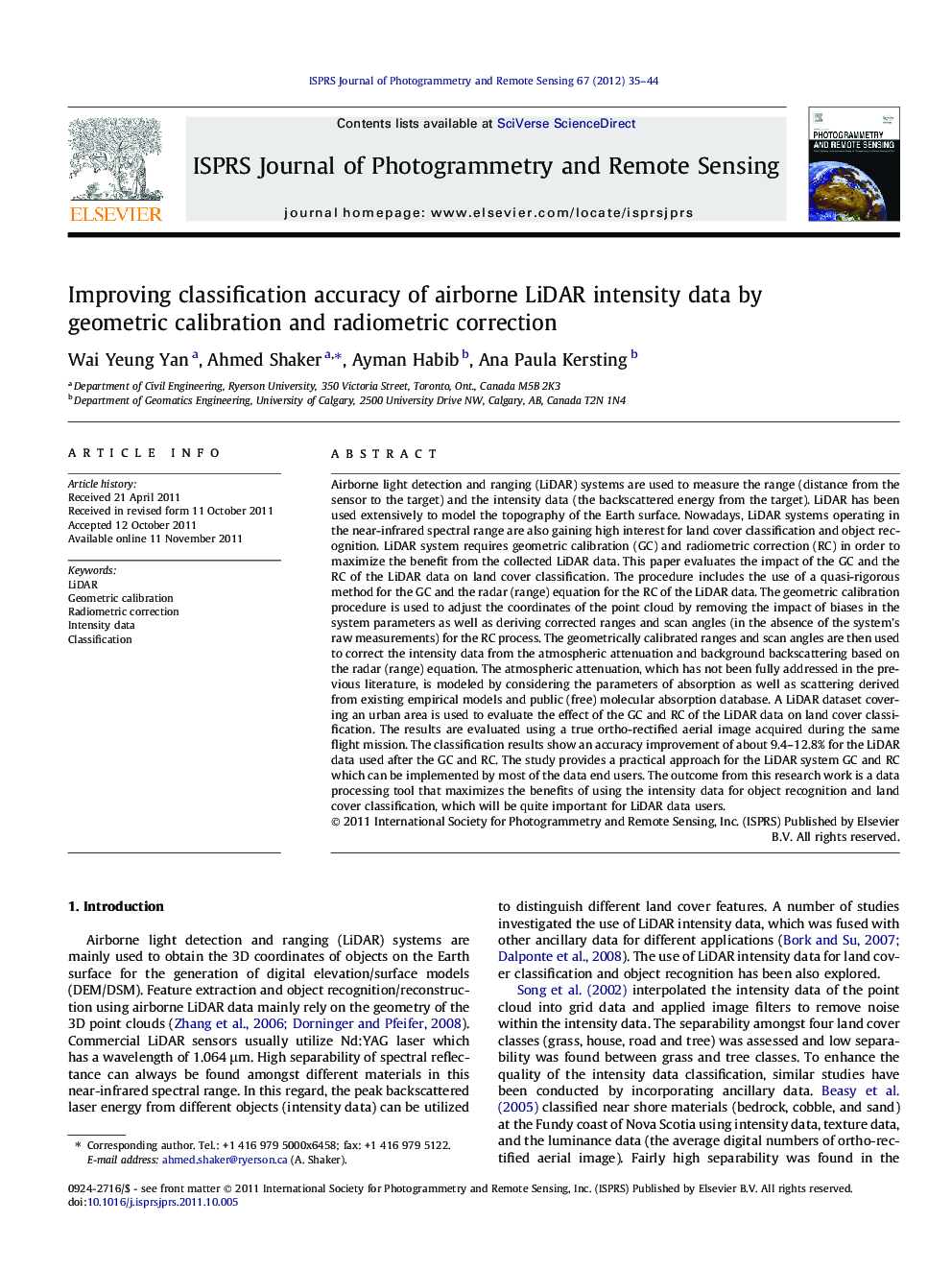| کد مقاله | کد نشریه | سال انتشار | مقاله انگلیسی | نسخه تمام متن |
|---|---|---|---|---|
| 557338 | 1451307 | 2012 | 10 صفحه PDF | دانلود رایگان |

Airborne light detection and ranging (LiDAR) systems are used to measure the range (distance from the sensor to the target) and the intensity data (the backscattered energy from the target). LiDAR has been used extensively to model the topography of the Earth surface. Nowadays, LiDAR systems operating in the near-infrared spectral range are also gaining high interest for land cover classification and object recognition. LiDAR system requires geometric calibration (GC) and radiometric correction (RC) in order to maximize the benefit from the collected LiDAR data. This paper evaluates the impact of the GC and the RC of the LiDAR data on land cover classification. The procedure includes the use of a quasi-rigorous method for the GC and the radar (range) equation for the RC of the LiDAR data. The geometric calibration procedure is used to adjust the coordinates of the point cloud by removing the impact of biases in the system parameters as well as deriving corrected ranges and scan angles (in the absence of the system’s raw measurements) for the RC process. The geometrically calibrated ranges and scan angles are then used to correct the intensity data from the atmospheric attenuation and background backscattering based on the radar (range) equation. The atmospheric attenuation, which has not been fully addressed in the previous literature, is modeled by considering the parameters of absorption as well as scattering derived from existing empirical models and public (free) molecular absorption database. A LiDAR dataset covering an urban area is used to evaluate the effect of the GC and RC of the LiDAR data on land cover classification. The results are evaluated using a true ortho-rectified aerial image acquired during the same flight mission. The classification results show an accuracy improvement of about 9.4–12.8% for the LiDAR data used after the GC and RC. The study provides a practical approach for the LiDAR system GC and RC which can be implemented by most of the data end users. The outcome from this research work is a data processing tool that maximizes the benefits of using the intensity data for object recognition and land cover classification, which will be quite important for LiDAR data users.
Journal: ISPRS Journal of Photogrammetry and Remote Sensing - Volume 67, January 2012, Pages 35–44